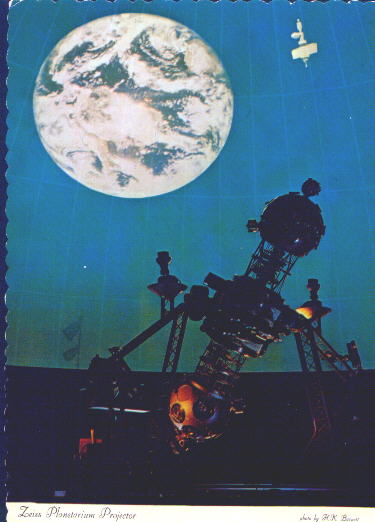 The
effectiveness of current laser-propulsion techniques is limited by the
instability of supersonic gas flow, caused by shock waves that “choke”
the inlet of the nozzle, reducing thrust. Those effects can be reduced
with the help of laser ablation, redirecting the plasma plume so that it
flows close to the interior walls of a supersonic nozzle and
significantly improving the overall thrust. Courtesy of Y.Rezunkov/IOIE
The
effectiveness of current laser-propulsion techniques is limited by the
instability of supersonic gas flow, caused by shock waves that “choke”
the inlet of the nozzle, reducing thrust. Those effects can be reduced
with the help of laser ablation, redirecting the plasma plume so that it
flows close to the interior walls of a supersonic nozzle and
significantly improving the overall thrust. Courtesy of Y.Rezunkov/IOIE Scientists and science fiction writers alike have dreamed of aircraft and spacecraft that are propelled by beams of light rather than conventional fuels. Now, a new method for improving the thrust generated by such laser-propulsion systems may bring them one step closer to practical use.
Currently, the maximum speed of a spacecraft is limited by the amount of solid or liquid fuel that it can carry. Achieving higher speeds means that more fuel must be burned — fuel that, inconveniently, has to be carried by the craft and hefted into space. These burdensome loads can be reduced, however, if a laser — one located at a remote location, and not actually on the spacecraft — were used to provide additional propulsive force.
A number of systems have been proposed that can produce such laser propulsion. One of the most promising involves a process called laser ablation, in which a pulsed laser beam strikes a surface, heats it up, and burns off material to create what is known as a plasma plume. The outflowing of that plasma plume — essentially, exhaust — generates additional thrust to propel the craft.
More - Link >>> http://www.scientificcomputing.com/news/2014/10/supersonic-laser-propelled-rockets-may-enable-aircraft-exceed-mach-10?et_cid=4240734&et_rid=544605860&location=top
Sources: The Optical Society, ScientificComputing.com .
2014: 75th Year of Pittsburgh's Buhl Planetarium

Want to receive SpaceWatchtower blog posts in your inbox ?
Send request to < spacewatchtower@planetarium.cc >..
gaw
Glenn A. Walsh, Project Director,
Friends of the Zeiss < http://buhlplanetarium.tripod.com/fotz/ >
Electronic Mail - < gawalsh@planetarium.cc >
SpaceWatchtower Blog: < http://spacewatchtower.blogspot.com/ >
Also see: South Hills Backyard Astronomers Blog: < http://shbastronomers.blogspot.com/ >
Barnestormin: Writing, Essays, Pgh. News, & More: < http://www.barnestormin.blogspot.com/ >
About the SpaceWatchtower Editor / Author: < http://buhlplanetarium2.tripod.com/weblog/spacewatchtower/gaw/ >
SPACE & SCIENCE NEWS, ASTRONOMICAL CALENDAR:
< http://buhlplanetarium.tripod.
Twitter: < https://twitter.com/spacewatchtower >
Facebook: < http://www.facebook.com/pages/
Author of History Web Sites on the Internet --
* Buhl Planetarium, Pittsburgh:
< http://www.planetarium.
* Adler Planetarium, Chicago:
< http://adlerplanetarium.
* Astronomer, Educator, Optician John A. Brashear:
< http://johnbrashear.tripod.com >
* Andrew Carnegie & Carnegie Libraries:
< http://www.andrewcarnegie.
* Civil War Museum of Andrew Carnegie Free Library:
< http://garespypost.tripod.com >
* Duquesne Incline cable-car railway, Pittsburgh:
< http://inclinedplane.tripod.
* Public Transit:
< http://andrewcarnegie2.tripod.
Many thanks for the exciting blog posting! I really enjoyed reading it, you are a brilliant writer. I actually added your blog to my favorites and will look forward for more updates. Great Job, Keep it up
ReplyDeletedentist reading